
Choreutidae, or metalmark moths, are a family of insects in the lepidopteran order whose relationships have been long disputed. It was placed previously in the superfamily Yponomeutoidea in family Glyphipterigidae and in superfamily Sesioidea. It is now considered to represent its own superfamily. The relationship of the family to the other lineages in the group "Apoditrysia" need a new assessment, especially with new molecular data.

Anthophila fabriciana, also known as the common nettle-tap, is a moth of the family Choreutidae first described in 1767 by Carl Linnaeus. The moth can be found flying around stinging nettles during the day.

Tebenna micalis, also known as the small thistle moth, is a species of moth in the family Choreutidae found worldwide. It was first described by the German Bohemian entomologist, Joseph Johann Mann in 1857.

Prochoreutis myllerana, Miller’s nettle-tap or small metal-mark, is a moth of the family Choreutidae found in Asia and Europe. Miller's nettle-tap was first described by Johan Christian Fabricius in 1794 from a specimen found in Sweden.
Brenthia albimaculana is a species of moth of the family Choreutidae. It is found in Indonesia, New Guinea and Australia.
Asterivora homotypa is a species of moth of the family Choreutidae. It is found in subalpine and alpine habitats in Australia. Adult moths have brown forewings, each with various white markings including two vague transverse white speckled bars. Their hindwings are brown, each with a vague white wiggly submarginal line. Their wingspan length is approximately 1 centimetre.
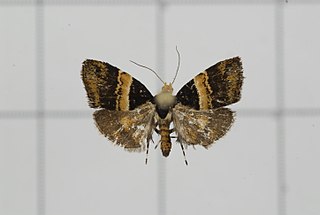
Choreutis basalis is a species of moth of the family Choreutidae. It is found in eastern Queensland, from Cape York to Yeppoon. It is also present in New Guinea and Indonesia.
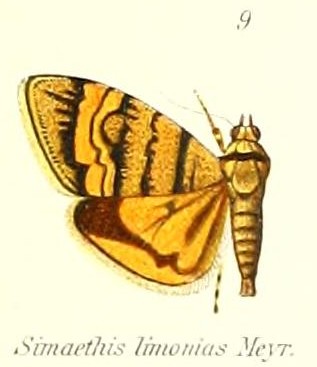
Choreutis limonias is a species of moth of the family Choreutidae. It is found in Australia.
Choreutis melanopepla is a species of moth of the family Choreutidae. It is found in Australia.

Choreutis metallica is a species of moth of the family Choreutidae. It is found in Queensland.
Choreutis ophiosema is a species of moth of the family Choreutidae first described by Oswald Bertram Lower in 1896. It is found in India, Sri Lanka, China, Taiwan, Amoy, the Moluccas, eastern Australia and Japan.
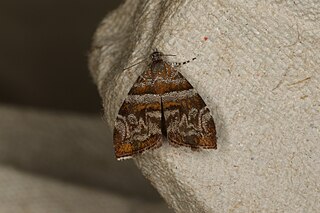
Choreutis periploca is a species of moth of the family Choreutidae. It is found in Queensland.
Choreutis sycopola is a species of moth of the family Choreutidae. It is found from southern Queensland to central New South Wales.

Saptha exanthista is a species of moth of the family Choreutidae. It is found in the rainforests of north-eastern Queensland as well as New Guinea and Indonesia.
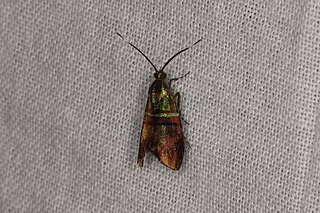
Saptha libanota is a species of moth of the family Choreutidae. It is found in northern Queensland.
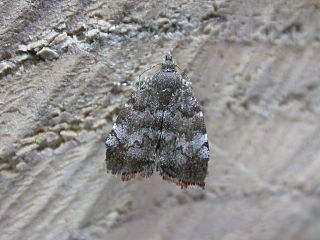
Choreutis pariana, the apple-and-thorn skeletonizer or apple leaf skeletonizer, is a moth of the family Choreutidae. The moth was first described by the Swedish entomologist Carl Alexander Clerck in 1759. It is native to Eurasia and was introduced to New England, USA in 1917.
Brenthia trilampas is a species of moth of the family Choreutidae. It was described by Edward Meyrick in 1918. It is found in the Philippines.
This page is based on this
Wikipedia article Text is available under the
CC BY-SA 4.0 license; additional terms may apply.
Images, videos and audio are available under their respective licenses.










